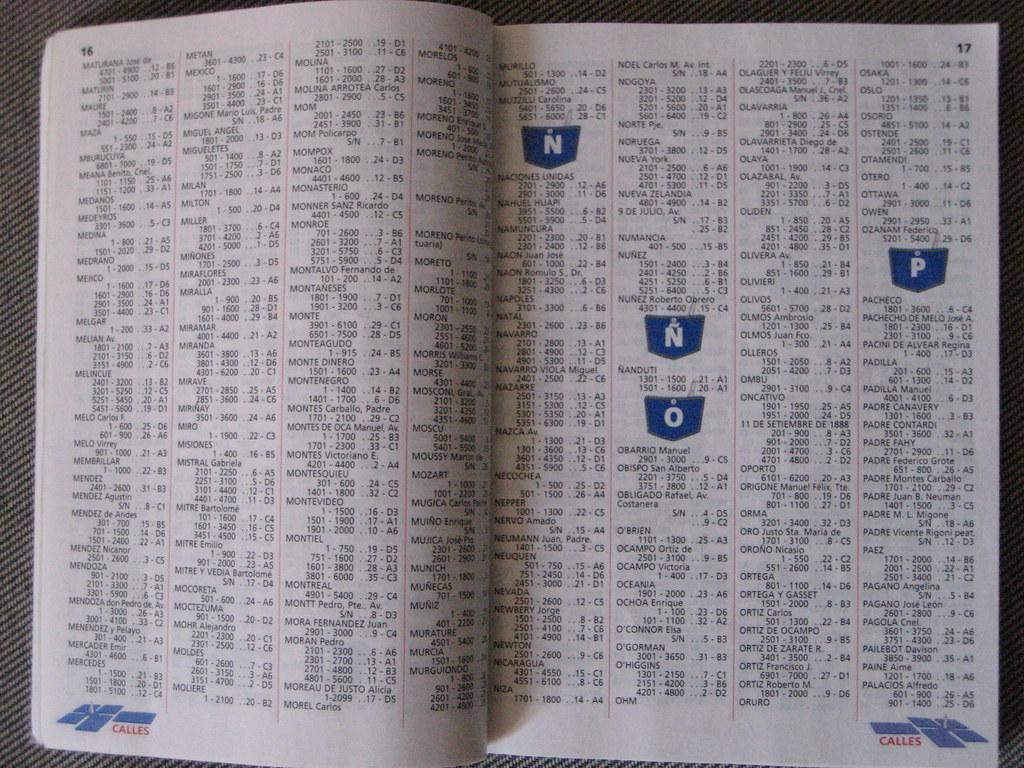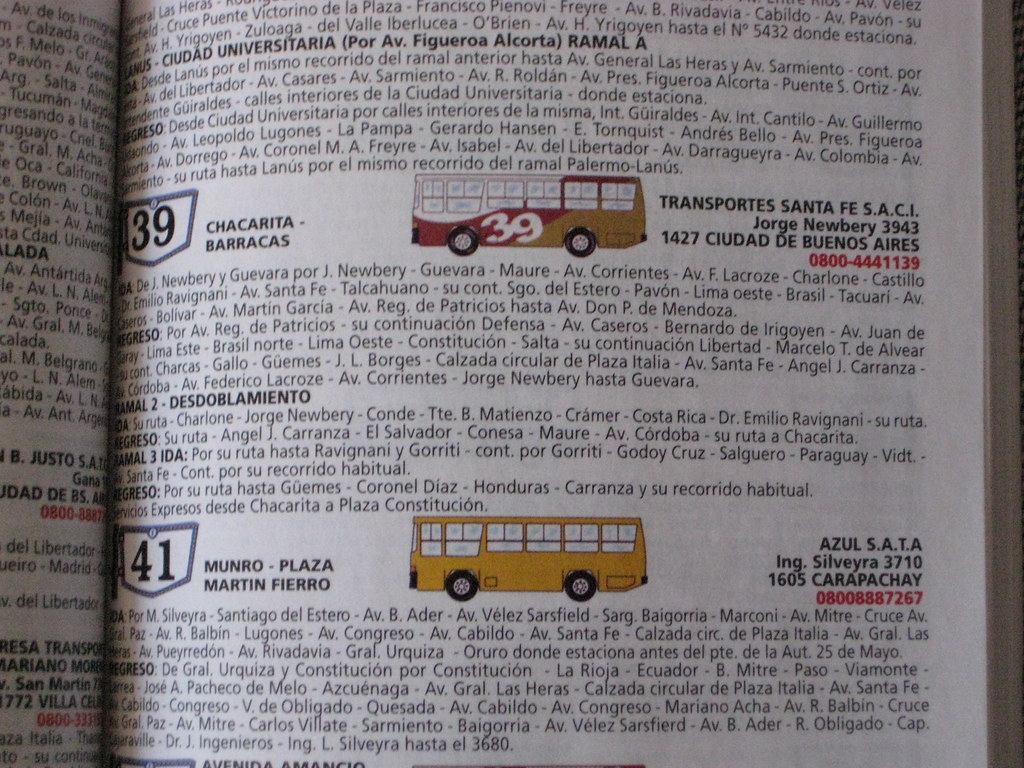on the buses ...
It can be tricky to get a true sense of orientation in Buenos Aires.
The microcentre of chain stores with the docklands of Puerto Madero lying to the east is easy enough, but it's once you start moving outwards that the problems begin.
With a few notable exceptions, the cities architecture varies little as you move between different barrios (neighbourhoods) and distances can be substantial as you traverse the gigantic grid system that accomadates 13 million inhabitants.
Taxi's are pretty good value here and the fare may only have just reached the dizzying heights of a five pounds as you reach your destination, yet you suddenly realise that you've just spent yet another 40 minutes gazing out of the window as the cab twists and turns through the maze of one-way streets. It can be a pretty disorientating experience.
It was becoming clear that if we wanted to really get to know the city in our month here we would need to start working a bit harder. It was time to take to the buses, and so we went in search of information.
Enter the Guia T - the bible of bus travel in Buenos Aires.


Sitting down to study our new purchase I was still utterly confused after half an hour had passed. None of the 30+ street maps in the booklet had routes marked on them, and there were no timetables to be seen anywhere.
Sure enough, the directory of bus routes in the rear of guide would allow you to trace the route of any given bus from map to map, but this didn't seem much use without some way of knowing whether it's the correct bus to start with. With over 250 bus routes to plot it was going to take me a couple of days just to find the right bus. I was completely stuck.
In other latin american cities collectivo's are hail-and-ride minibuses that operate fixed routes and we'd used them on several ocassions previously. Armed with that piece of knowledge I had disregarded as irrelevant the grid of collectivo numbers on the left hand side of each map page.
As Mel cleverly pointed out, the missing piece of the puzzle is that buses are called collectivos here, and all of a sudden things started making sense.
Well almost.
It is still possibly the most confusing bus timetable on the planet.
Here's my easy-to-use, step-by-step guide to using the Guia T.
Step 1
Look up the street of your destination in the index (fig. 1) to find the map number and grid reference. This may span several maps.
Step 2
Find the correct cuadre (block) using the building number (e.g 360 Avendia Sante Fe).
The street number is marked periodically on the map pages (fig. 2), and most blocks cover exactly 100 (e.g. 500-600). You may have to track a long street over a number of pages to find the right block but you should easily locate your destination.
Step 3
Finding which bus routes pass nearby is now fairly straightforward. Your block will lie within a grid reference on the map (e.g. A3) and by looking at the corresponding grid on the left hand side of the map page (fig. 2) you can identify all the buses which pass through each gird reference.
Bear in mind that buses in adjacent grid references (which are several cuadres wide) may pass much closer to your actual destination, particularly if your destination is close to the perimeter.
Considering a 3-square block of 9 grid references is therefore good practice and should generate you a list of 10-50 potential buses serving your destination.
Step 4
Repeat steps 1-3 for your current location and compare results.
This should leave you with a short list of buses which travel from approximately your location, to your destination.
If there are no "matches" then you could consider changing buses.
A more effective strategy would be to catch a cab if you don't have time for the week of planning this would surely involve.
Step 5
In order to know where to get on and off the bus (essential information I feel) you now need to plot the route, using the street-by-street route in the bus index at the rear of the guide (fig. 3).
You don't need to do this in it's entirety, just for a few streets around your location and destination so you can (a) find the bus stop, and (b) have an idea of how you'll arrive at your desintation.
If you have more than one bus on your short list then repeat this exercise for each one - it could help avoid an unnecesary long walk at either end.
Beware the law of diminishing returns. Once you have located a bus within a short walk (say 5 cuadres) of either end you are unlikely to find a bus which saves more time than the effort required to locate it.
Advanced planners will select routes using major avenues as much faster routes for covering the same distance.
Step 6
Go catch your bus!
Walk to the street nearest your current location and walk along it in the direction of the bus route to find the bus stop with the corresponding number on it. The Guia T doesn't provide any times, but we've never had to wait for longer than 3-4 minutes for one to turn up.
You will need to tell your destination (using a cross street or a plaza) to the driver who will assign a price (usually 0.90 or 1.00 Peso) and you then drop coins of the same or higher value into the ticket machine behind him. Most will give change, but its important to know that you cannot travel without having coins.
Also most bus drivers seem to only speak and comprehend local slang and the Porteño pronunciations of Spanish, so take the Guia T and revert to pointing out your destination in the event your language skills fail you.
To alight just ring the bell a caudre or two before your intended intersection and you should end up somewhere close by.
And just for a moment I almost beleived it.

No comments:
Post a Comment